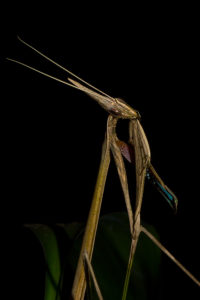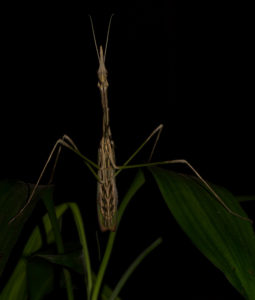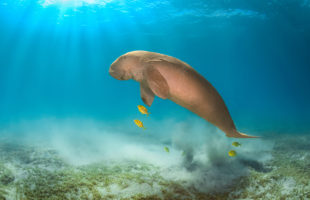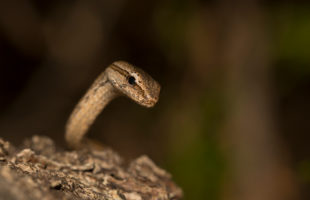Praying mantises are ill-reputed as man eating and murderous within the animal kingdom. And the triangular-shaped head lets them look like real aliens. But there is more to it than that! They are fascinating insects, and an especially impressing species among them is Idolomorpha madagascariens from Madagascar. It exceeds most Malagasy praying mantis with a body length of filigree seven to nine centimeters. Purple-yellowish colours adorn the wings, and make a great contrast to the bright green or beige body. Males wear feathered antennae ornamenting their high heads.

The long, slender body serves camouflage purposes perfectly: In dry zebu grass, this praying mantis is almost invisible. For hours, it remains motionless in the high grass waiting for prey. The head can turn almost 180° so there is not even a need to move around for this mantis. The first pair of legs is eponymous in praying mantis: It has turned into some kind of catching device, and the spiny upper and lower thighs fold up like a pocket knife. When lurking for prey, it almost looks as if the insect was “praying”. But these catching leg pair is highly functional and not at all used to call spiritual powers: The mantis catches butterflies right from the air in less than one tenth of a second.
Idolomorpha madagascariensis occurs almost everywhere in Madagascar, inside the dry forest of Isalo as well as in the rainforest of Vohimana or the secondary vegetation around Antsohihy, in the south as well as in the north of the island. It is a little easier to find this species during rainy season, when they are more active and males are looking for females ready to mate. For males, mating means it is all about perfect timing. In best case, the male waits until the female is busy eating her prey. Then he has the best chances not to end as a snack for his beloved mantis. In fact, most males do not die as their own species’ food, but mate several times with different females. And just in case a male gets catched by a female: This is no problem. As long as the rest of the body is already copulating, a lacking head in the male does not matter.

After mating, the female lays several so-called ooths under branches or leaves. The offspring develops inside the shelter of these foamy, ribbed structures. Some docens of small, greenish-brown praying mantises hatch from one ooth after two or three months. They are called larvae, hardly one centimeter in size, but can catch insects just as the adults. It takes eight moultings until Idolomorpha madagascariensis is fully grown and ready to mate – only a mere fraction makes it this far. Most larvae have been eaten before by hungry lemurs, birds or reptiles. It is dangerous to be a praying mantis!
Although Idolomorpha madagascariensis has been kept in captivity outside Madagascar for years, few is known about this species. These wonderful insects do even not have any protection status yet. But given their high reproduction rate and high occurrence one can assume that Idolomorpha madagascariensis will survive in Madagascar for many, many years.
 MADAMAGAZINE Your Magazine about Madagascar
MADAMAGAZINE Your Magazine about Madagascar






